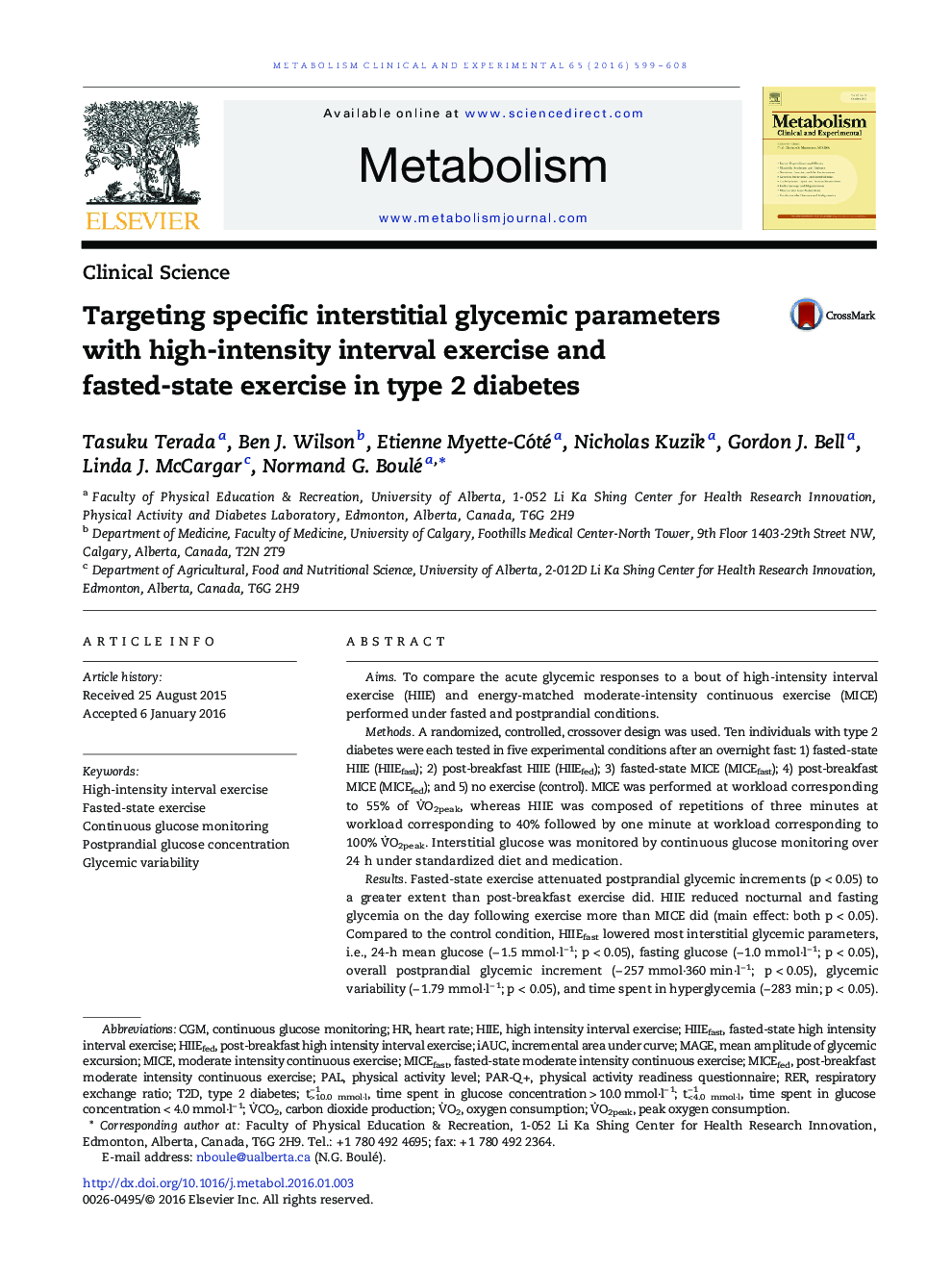| کد مقاله | کد نشریه | سال انتشار | مقاله انگلیسی | نسخه تمام متن |
|---|---|---|---|---|
| 2805460 | 1157055 | 2016 | 10 صفحه PDF | دانلود رایگان |
AimsTo compare the acute glycemic responses to a bout of high-intensity interval exercise (HIIE) and energy-matched moderate-intensity continuous exercise (MICE) performed under fasted and postprandial conditions.MethodsA randomized, controlled, crossover design was used. Ten individuals with type 2 diabetes were each tested in five experimental conditions after an overnight fast: 1) fasted-state HIIE (HIIEfast); 2) post-breakfast HIIE (HIIEfed); 3) fasted-state MICE (MICEfast); 4) post-breakfast MICE (MICEfed); and 5) no exercise (control). MICE was performed at workload corresponding to 55% of V.V̇O2peak, whereas HIIE was composed of repetitions of three minutes at workload corresponding to 40% followed by one minute at workload corresponding to 100% V.V̇̇O2peak. Interstitial glucose was monitored by continuous glucose monitoring over 24 h under standardized diet and medication.ResultsFasted-state exercise attenuated postprandial glycemic increments (p < 0.05) to a greater extent than post-breakfast exercise did. HIIE reduced nocturnal and fasting glycemia on the day following exercise more than MICE did (main effect: both p < 0.05). Compared to the control condition, HIIEfast lowered most interstitial glycemic parameters, i.e., 24-h mean glucose (− 1.5 mmol·l− 1; p < 0.05), fasting glucose (− 1.0 mmol·l− 1; p < 0.05), overall postprandial glycemic increment (− 257 mmol·360 min·l− 1; p < 0.05), glycemic variability (− 1.79 mmol·l− 1; p < 0.05), and time spent in hyperglycemia (− 283 min; p < 0.05).ConclusionThis study showed that HIIE is more effective than MICE in lowering nocturnal/fasting glycemia. Exercise performed in the fasted state reduces postprandial glycemic increments to a greater extent than post-breakfast exercise does. Performing HIIE under fasted condition may be most advantageous as it lowered most aspects of glycemia.
Journal: Metabolism - Volume 65, Issue 5, May 2016, Pages 599–608
